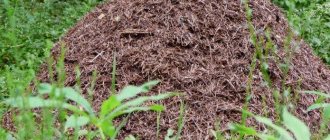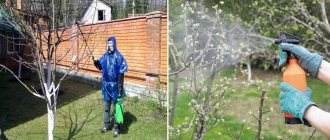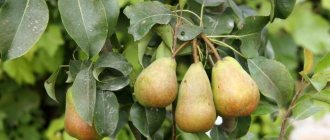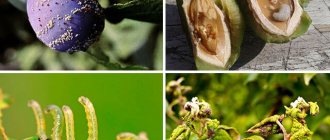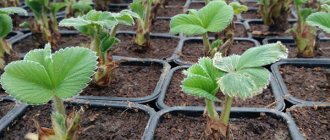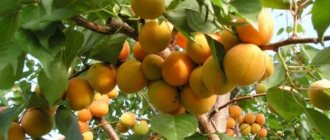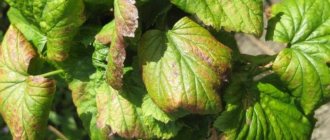In order not to wait for the invasion of vicious mites, insects and pathogenic fungi, we advise you to treat strawberries against pests and diseases in the spring. Two or three sprayings from the moment the snow melts until the end of flowering will allow the strawberry bushes to safely harvest and calmly begin the formation of next year's flower buds.
What to process? Are there effective folk remedies? Or maybe biological products? Or is it still “chemistry”? We will try to answer these and other questions.
Let's start with biological products, which we all love for their safety and environmental friendliness. Our point of view is this: in early spring, biological products are useless for spraying wild strawberries. Let's explain. Firstly, they do not act as quickly as chemicals, and their effect is cumulative. It usually takes at least four treatments to notice results. Secondly, most biologics do not work well in cool weather. As a rule, they need an air temperature of at least +15°C. In the Moscow region, in the middle zone and many other regions, such a warm spring is very rare.
Therefore, yes, chemicals. But strictly according to the instructions and all the rules.
How to treat strawberries against diseases after winter
The main diseases of strawberries (gray rot, powdery mildew, brown spot and others) are caused by pathogenic fungi. And fungicides and copper-based preparations always and everywhere help us against fungi.
We will spray the beds twice, preferably with different means:
- We carry out the first treatment in early spring, as soon as the snow has melted and leaves have appeared,
- The time for the second treatment against diseases is before the start of flowering, bud by bud.
Copper sulfate
Blue crystals of copper sulfate are effective against a number of fungal diseases of strawberries, including powdery mildew, rust and various spots. To prepare the solution, you need 10 grams of vitriol per 10 liters of water.
Bordeaux mixture (mixture)
No less famous and popular fungus fighter. For strawberries, it is considered a more suitable option than pure copper sulfate, since it is gentler. Bordeaux mixture is copper sulfate dissolved in a lime emulsion. You can buy it ready-made or prepare it yourself. You will need:
- 100 grams of copper sulfate,
- 150 grams of lime,
- 10 liters of water (8 liters cold and 2 liters hot),
- 2 non-metallic containers with a volume of at least 5 liters.
We put vitriol in one container and lime in the other. Fill each substance with a liter of hot water. Mix well and add water to 5 liters. Strain the lime liquid. And without ceasing to stir it in a circle, pour in the vitriol solution in a thin stream. Ready. You can and should begin processing, since the finished solution cannot be stored.
Horus (or Falcon)
Systemic fungicide with high efficiency against pathogens of gray rot, powdery mildew, white and brown spot. Its biggest advantage is its excellent performance at low temperatures (from +3°C). In addition, it is low-risk for the environment and completely safe for bees. To prepare the solution, dissolve 3-3.5 grams of the drug in 10 liters of water.
Cuproxat
Contact copper fungicide. It is good because it forms a kind of protective film on the leaves that is not washed off by rain. The solution is prepared as follows: 6 milliliters of the drug per 1 liter of water.
HOM (copper oxychloride)
A very popular copper-containing preparation among gardeners. It is inexpensive, easy to use, compatible with other fungicides and insecticides, and quite effective. The death of pathogenic fungi occurs 3-4 hours after treatment. Consumption of the drug is 40 grams per 10 liters of water.
Strobe
This is a synthetic biological product, low-hazard for bees and our gardens. It does not lose effectiveness in cold weather (can be used from +1°C and above). It penetrates well into the leaves, even if the leaf is partially sprayed. And its protective effect lasts up to 6 weeks. To prepare the solution, 2 grams of fungicide are dissolved in 10 liters of water.
When to process strawberries in spring
Treatment of plants against diseases and pests is carried out after the snow has melted on the beds. And this depends on the weather conditions of each region.
- In the South - from March 1 to June 1.
- In the middle zone - from March 15.
- In the Northern regions - from April 15.
In the presence of diseases, drugs are used in the following order:
- First, a biological product is an effective means of combating fungi or pests that do not harm plants.
- Next, if necessary, use a chemical fungicide or insecticide. They are used with extreme caution to bring benefit and not harm.
Important! Chemicals should only be used when there are a large number of pests or massive fungal disease.
During early spring treatment, drugs can be alternated differently. Biological products operate at temperatures not lower than +15°C. It is most effective at +18°C to +28°C. Therefore, in the cold spring after the soil has thawed, they are not used.
If there is infection, water it with copper sulfate or Bordeaux mixture. And after warming, biological agents are used.
Spring treatment of strawberries from pests
The most common and harmful pests of strawberries are the strawberry (transparent) mite and the raspberry-strawberry weevil.
And the main thing to remember is that the first pest is not an insect, but an arachnid. Acaricides are used against ticks. The weevil, on the contrary, is an insect, so insecticides will help us in the fight against it. So, if last season the strawberries were severely damaged by mites, as soon as the snow melts and the ground dries slightly, we spray the beds with one of the acaricides: Actellik, Omite, Sunmite, Envidor or Masai.
If a weevil dominates the strawberry bed, we carry out treatment with such means as: Kemifos, Alatar, Inta-vir.
Most likely, one spring treatment against pests for strawberries will not be enough. And you will have to spray again after fruiting and pruning the leaves. But that's a completely different story. Biological preparations like Fitoverm or Agrovertin can also work here.
Is it necessary to do something if there were no pests observed last year? Certainly! Prevention is everything. After the snow melts, we water the beds with very hot water (60-65°C). You can add potassium permanganate to the water. Pour half a liter onto each bush. It is quite enough for prevention. And if it seems not, we suggest using one of the folk recipes, which will be discussed below.
Processing times
Spring is often accompanied by the appearance of fungal diseases on strawberries, but this crop needs to be treated with Bordeaux mixture several times a season, spraying the beds with the prepared liquid solution. To eliminate the negative impact of this product on the bushes, treatment must be carried out strictly within certain periods:
- in spring, spraying is carried out at the end of March or beginning of April until the buds open - this procedure is carried out to prevent fungal infections;
- if the bushes were affected by fungal diseases after the first leaves appeared, then the beds are irrigated before or after flowering ;
- if a fungal disease occurs, then you can spray strawberries with this substance no later than 3 weeks before picking the berries ;
- The last treatment of plants occurs in late autumn and is carried out after harvesting .
Folk remedies against pests and diseases of strawberries and strawberries
If you are categorically against industrial drugs in your garden, there is only one alternative - folk remedies. They cannot boast of super-efficiency, and they require more labor, but, on the other hand, in organic beds in healthy soil the number of pests and pathogens is usually small.
And as a prophylactic agent they have no equal. Because folk formulations, as a rule, are much safer than any drug. There is another option for using them, as they say, “for safety net.” For example, after winter, we treated the strawberry bed with an insecticide according to all the rules. And right before flowering, the marigolds were also sprinkled with a strong infusion. It will not harm the plant, but provides additional protection from pests.
There are a lot of recipes for decoctions and infusions for processing strawberries. But not all of their components are available in spring, especially early. What can you cook at the beginning of spring?
Folk remedies for strawberry pests
Garlic infusion
An infusion of 15 large cloves of garlic is prepared. They need to be crushed and infused in 5 liters of water for 7 days. Then strain.
Onion peel infusion
A liter jar is filled with onion peels and filled to the top with hot water. Leave for 48 hours, then filter and dilute 1:2. The plants are treated immediately, since the infusion cannot be stored.
Red pepper decoction
To prepare the decoction, 100 grams of hot pepper should be boiled in 10 liters of water for an hour. Before use, the concentrated decoction is diluted with water at the rate of 500 milliliters per bucket.
Infusion of marigolds
It is prepared from dried flowers according to the same principle as an infusion of onion peels. Just don't need to dilute it. For spraying, a strong infusion of marigolds is needed.
Traditional recipes for combating strawberry diseases
Water extract from ash
Pour three kilograms of wood ash into 10 liters of hot boiling water. Add 40 grams of grated laundry soap. Let the infusion stand for 12 hours and use as directed.
Mustard infusion
For 10 liters of water you will need 100 grams of mustard powder. Let the mustard steep for two days, then filter the infusion. Before use, dilute twice.
Complex product based on whey
Combine and thoroughly mix 1 liter of whey, 1 tablespoon of 3% hydrogen peroxide and 40 drops of iodine. We use it for preventive spraying of bushes against powdery mildew, gray rot and other diseases.
Complex product based on birch tar
For 5 liters of water you need to add a whole list of components:
- 1 tablespoon of birch tar;
- 1/2 teaspoon of iodine;
- 1/4 teaspoon boric acid;
- 1 tablespoon of ammonia;
- 1/2 teaspoon fir oil.
All this must be mixed very, very well. Before processing, dilute the resulting mixture 1:20. Spray or water the leaves from a watering can.
Caring for strawberries after fruiting
Harvesting usually occurs in July. Plant treatment includes the following activities:
- mustache trimming;
- elimination of dried and diseased leaves;
- weeding;
- feeding;
- hilling.
The end of the fruiting process is a stimulus for the growth and development of young leaves. Whiskers with side rosettes are intensively formed, new buds are formed.
Weeding the beds is carried out first. At the same time, remove unnecessary mustaches and dried leaves. Leaves with reddish tints should be cut off as quickly as possible. In order not to damage the bushes, leaves and tendrils should not be torn off. Damage to strawberries can cause disease.
Cutting leaves and tendrils is carried out using sharpened scissors or garden pruners. To prevent the proliferation of pests, dead leaves are burned.
If the bushes are not pruned, young plants will not have time to grow green mass and receive enough nutrients to survive the winter.
After pruning, last year's mulch is removed from the beds, the soil is loosened, watered and fertilizers are added to it. The interbeds are loosened to a depth of 10 cm; the depth of loosening around the bushes should not exceed 5 cm.
To ensure that the soil completely covers the roots, the strawberries are hilled. This is especially important for plants in the second year of cultivation and older, since the roots protrude strongly from the ground.
After fruiting is completed, strawberries need fertilizers containing trace elements in sufficient quantities. Consumption is 30 g per 1 sq. m. Special fertilizers for strawberries can be bought in the store or use ammophosphate.
More on the topic: Strawberry harvest 2022. What work needs to be done in the fall
The use of fertilizers containing potassium chloride is contraindicated. It slows down the growth process of plants and negatively affects the formation of berries. The depth of application of fertilizers into the soil is about 6 cm.
Along with industrial products, you can use natural ones. Humus improves the structure of the soil and increases its fertility. A solution of chicken manure and water at a ratio of 1:15 is also suitable. You need to water the strawberries so that the solution does not get on the leaves and burn them.
Water the plants depending on soil moisture. On average, watering is done once a week, 10 liters per 1 square meter. m.
Treatment of young strawberry seedlings before planting
Most often, we prepare a new bed of strawberries for planting in August-September.
But spring planting is also not prohibited. And if you are planning one, do not forget to disinfect the seedlings before planting. Especially purchased or taken from a neighbor. First option. To treat planting material, prepare the following mixture: three tablespoons of table salt and one teaspoon of copper sulfate per 10 liters of water. Strawberry rosettes are immersed in this solution for 10-15 minutes. Then they are rinsed with water and planted in a prepared bed. After such treatment, fungi have no chance!
Second option. The roots of young strawberry seedlings can be soaked in Fitosporin. We dilute 10 grams of the drug in 5 liters of water. And soak the roots in the solution for an hour.
Third option. Hot water also does a good job of disinfecting seedlings. Before planting, young rosettes are kept for 15 minutes in water heated to 45°C.
Also, sow marigolds and calendula in the new bed between the strawberry bushes, plant garlic and onions. And the garden bed will be more beautiful and the soil will be healthier.
Preventive measures
Preventive treatment is carried out to prevent the appearance of gray rot, brown spot, powdery mildew, slugs, mites, nematodes, as well as other diseases and pests. For this, fungicides Horus, Falcon, and Strobi are used. Spraying can be done on wet or dry leaves.
If spider mites were noticed on plants last year, then during the first treatment with fungicides against diseases, it is recommended to additionally spray the plants with Calypso or Envidor. You can also use Fitoverm and Actofit against ticks.
Processing strawberries in the spring before planting
Before planting young seedlings, it is recommended to treat them in a solution of copper sulfate, for the preparation of which you will need to dissolve 3 g of crystals in a 10-liter bucket of water. This treatment will prevent fungal diseases and increase the protective functions of plants.
To protect planting material, experienced gardeners treat the roots of seedlings in potassium permanganate. This substance has a powerful antiseptic effect and helps destroy fungal spores, as well as other pathogenic microorganisms. Before planting the plants, it is recommended to place them in a container filled with a small amount of potassium permanganate solution and leave for 1-2 hours.
Instead of potassium permanganate or copper sulfate, you can use purchased products that help protect plants from diseases and pests. As such a remedy, you can use Fitosporin, which is an effective preventive and therapeutic drug.
Soil treatment with antiseptics
At the beginning of March or the end of April, when planting work has not yet begun, it is recommended to treat the soil with an antiseptic solution in those places where the plants suffered from diseases last year. Potassium permanganate is perfect for such a solution. Watering the soil with boiling water will destroy pests and their larvae overwintering in it.
To disinfect the soil, you can also use a solution of copper sulfate, which is prepared at the rate of 20 g of copper sulfate per 10 liters of warm water.
How to spray strawberries correctly: 5 rules for effective treatment
Treatments with chemicals (and biological products too) will be safe and effective if you are not lazy and follow a few rules:
- Carefully read the instructions for use of the drug and strictly follow the indicated dosages,
- Alternate medications. If some product helps, this does not mean that you need to spray only with it and nothing else. Pests and pathogens can adapt to anything. Treatments with various means give the best effect. In this case, focus not on the name of the drug, but on the active substance,
- Carry out treatments in the evening, in dry weather,
- Wet plant leaves and stems generously when spraying. Strawberry pests love to hide on the back of leaves.
- Use personal protective equipment (gloves, goggles, respirator) even when working with low-hazard drugs.
Application of urea
Strawberries are finicky crops, the yield of which directly depends on the quality of the soil. Nitrogen is a necessary element for full development. To saturate the bushes with this substance, strawberries are sprayed with urea. The composition is highly soluble in water. After carrying out the activities, the plant quickly absorbs the component necessary for growth. Urea must be used during the ripening period. At this time, the bushes especially need nutritional components. The positive qualities of urea include:
- significant increase in harvest quantity;
- application of fertilizer for any type of soil;
- use for both root feeding and foliar spraying;
- saturating the plant with nitrogen.
An important factor is compliance with the dosage and concentration of the substance. If the norm is exceeded, the fruits will ripen very small. Excess can also lead to the death of the plant, or the fruits will become tasteless and watery. Spraying is allowed three times:
- The first is in early spring, immediately after the snow melts. Performed to stimulate growth and awaken culture;
- The second is after the seasonal harvest. Necessary for maintaining the plant in the cold season;
- Third - in the autumn, it is mandatory to obtain a bountiful harvest next summer.
You can determine when a plant needs additional nitrogen fertilizers by the condition of the foliage. The greens begin to turn yellow, thin stems and small berries form.
Sanitizing the strawberry bed
In conclusion, I would like to remind you that in addition to preventive or therapeutic spraying, the strawberry bed requires standard spring sanitary treatment. We recommend:
- remove mulch from the beds that has not rotted during the winter,
- straighten the sides of the beds,
- feed the strawberries with complex mineral or organic fertilizer,
- mulch again when warm weather arrives.
We wish you success and great harvests!
How to store the solution
Most gardeners prefer to use a “fresh” solution of copper sulfate. But the liquid does not have to be used immediately; it can be stored without loss of “consumer properties” for up to a year.
To do this, prepare a concentrated 10% solution and pour it into a glass or enamel container with a tight-fitting lid. If there is no such container, a plastic container will do.
The copper sulfate solution is kept in a dark room with a constant temperature of about 20 °C. The container must be placed separately from food, animal feed, medicines, and drinking water containers.
Before use, the “concentrate” is filtered and the required volume of water is added.
Important! Do not store copper sulfate solution in containers made of any metal. Due to a chemical reaction, the liquid becomes unsuitable for processing strawberries - its antibacterial properties are neutralized.
Is it possible to use copper sulfate for strawberries?
Strawberries are a capricious crop. Not all summer residents manage to reap a good harvest. In order for the berries to ripen on time, be large and tasty, you will have to follow a number of measures.
You may be interested in: Treatment of strawberries with copper sulfate in spring How to use bone meal as a fertilizer Ammophos fertilizer: characteristics, composition, instructions for use
Particular attention should be paid to the spring treatment of crops. At this time, insects appear that can harm the garden.
In order for a crop to bear fruit, it must be properly cared for. Preventative measures play an important role. To protect crops, experienced summer residents use copper sulfate. Treatment with the product is necessary in the following cases:
- for soil disinfection;
- for processing seedlings;
- for soil fertilization if there is a copper deficiency;
- when preparing plants for winter.
Advantages and disadvantages of Bordeaux mixture
Bordeaux mixture is an effective fungicidal agent that has a number of advantages. However, this drug also has disadvantages.
The mixture is capable of destroying pathogens in a short time
Pros:
- safety for plants;
- high level of mixture efficiency;
- wide spectrum and long period of exposure;
- antiseptic properties;
- the ability to replenish calcium deficiency in the soil and reduce its acidity;
- does not accumulate in fruits;
- not washed off by rain;
- affordable price of the mixture and ease of preparation;
Minuses:
- has a repellent effect on bees;
- toxicity of the solution;
- ability to accumulate in soil;
- impossibility of use during flowering and fruiting;
- the possibility of leaf burns if the dosage is incorrect;
- long waiting period.
Immediately after the snow melts (before the growing season begins)
The first treatment of strawberries in the spring must be carried out before the growth points on the bushes awaken.
Removing old foliage.
Strawberry plants are cleaned of the lower leaves - darkened, spotted, withered. They remove overwintering spores of infections. Only healthy-looking top leaves are left on the bushes, and if they are not there, they will soon grow back if the “heart” has successfully overwintered.
Treatment of plantation with hot water.
While the strawberry has not started to grow and is in a dormant state, it is doused with hot water from a watering can, the temperature of which should not be lower than +60 degrees and not higher than +63 degrees. It is very important to strictly observe exactly this temperature regime: the roots, horns and “hearts” of the plants will not be damaged, but a significant part of the microscopic strawberry mites, which overwinter en masse at the base of the leaf petioles, will be “cooked”. Spring treatment of strawberries with hot water also reduces the number of pathogens. This kind of “shower” is especially useful for old plantations. It is important that this method works without the use of chemicals.
Spraying with Bordeaux mixture with a concentration of 3%.
To prevent and treat fungal infections, treat the strawberry bed with a strong (3%) solution of Bordeaux mixture (according to the instructions for this chemical fungicide). Such “eradicating” spraying reduces the severity of damage by many diseases (leaf spot, gray rot of fruits, anthracnose).
Treatment with Farmayod.
Instead of Bordeaux mixture, you can use the drug Farmayod 10%, dissolving 3 ml in a bucket of warm water. This is how disinfection occurs - the destruction of overwintering pathogenic fungi.
As long as the air temperature does not exceed +15 degrees, biological fungicides (beneficial live bacteria against diseases) are ineffective. And insect pests still sleep in winter shelters, so insecticide treatments are useless.
Recommendations
A few additional tips will make processing and feeding strawberries more effective.
- Prepare solutions and spray only in overalls made of rubberized fabric: apron, boots, oversleeves, gloves, headgear, respirator.
- Prepare solutions in strict accordance with the instructions.
- Do not allow children and animals into the process.
- Do not use expired medications.
- Do not work in your garden with powerful pesticides. If their use is necessary, call specialists.
All treatments should be carried out according to schedule, without being late with spraying, fertilizing, or harvesting fruits.
